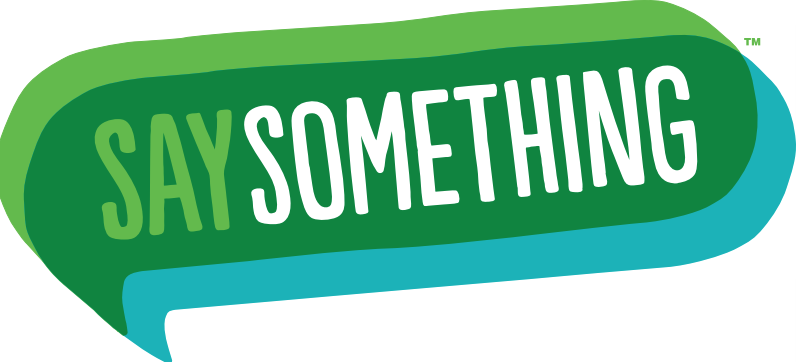GHS Encourages Students to Say Something
October 12, 2017
This coming week, Oct. 16-20, is Say Something Week, a week dedicated to the Say Something campaign, a branch of Sandy Hook Promise, an organization founded as a direct result of the Sandy Hook shooting.
Sandy Hook Promise is a program created by parents of the children who were killed when a gunman open fired in Sandy Hook Elementary School in Newtown Connecticut on Dec. 14, 2012. Their main focus is to prevent gun violence before it happens, and Say Something is one of their main programs.
According to Say Something, there has been almost one school shooting per week since 2013, a terrifying thought to students and teachers. Thankfully, there is something everyone can do.
The reality is that 80 percent of, or 4 out of 5, school shooters tell others about their plans beforehand, and 70 percent of students who commit suicide share their plans or give some type of signal before they act.
School Social Worker Trisha Kilpin is aware of these terrible statistics and encourages students to speak up if they notice potential warning signs.
“In most acts of school violence there has been research that has shown that most kids tell someone before they commit an act,” she said. “We want to make sure we’re not missing signs.”
The Say Something campaign is dedicated to teaching middle and high school students how to recognize warning signs of gun violence or suicidal thoughts, especially on social media. Their three key steps are: 1) Look for warning signs, signals, and threats. 2) Act immediately. Take it seriously. 3) Say something to a trusted adult.
Kilpin wants to make sure kids feel comfortable talking to an adult at school about a potentially harmful situation. She understands that it can be uncomfortable, and many students don’t want to lose their friends’ trust, but it is worth it in the long run.
“We’re not going to overreact. We are going to try to figure out what that kid needs to stop hurting. We can’t help if we don’t know,” Kilpin said. “We try to assess what kind of supports someone needs, what are they upset about, and how can we help solve that problem. Our main focus is keeping everyone safe.”
Schools can implement the Say Something program through assemblies with Say Something trainers, or by downloading a kit. Implementing a Promise Club is another way schools can participate in the Say Something program. Promise Clubs are led by a chaperone and student leaders, and are flexible and able to be customized to fit the needs of the student body.
GHS is in the beginning stages of implementing Say Something and Kilpin hopes it will encourage students to be more vocal. Until the program gets off the ground, she wants kids to know that it is okay to speak up.
For more information, visit http://www.sandyhookpromise.org/saysomethingweek
